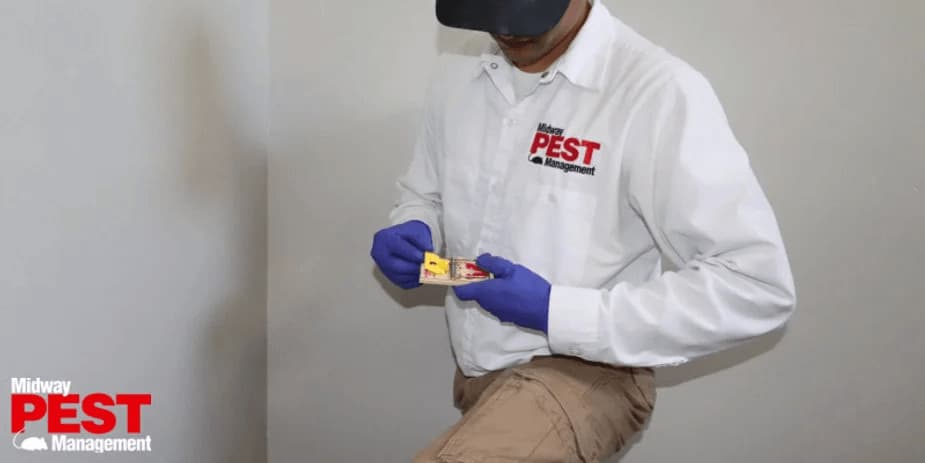
Ultrasonic mouse repellents drive these unwanted visitors by emitting ultrasonic sound to keep mice away from food sources and nest areas in human houses. This works on the principle that high-frequency sounds can be used to drive them away. These devices have been advertised as effective repellents for various pests, including roaches, insects, and rodents, mainly rats and mice.
So can ultrasonic mouse repellents cause damage to humans? Generally, no. These ultrasonic mouse repellents aren’t even proven to affect the hearing of mice. However, if your hearing is sensitive, you may experience some level of discomfort from this device. Some symptoms include tinnitus or a sustained high pitch sound in the ear, weariness, difficulty in sleeping, dizziness, nausea, and headaches. If you experience at least one of these, then you may be sensitive to ultrasonic noise and must stay away from sounds like this.
Do Ultrasonic Mouse Repellents Even Work As Advertised?
Ultrasonic rodent repellents are small devices that create high-frequency sound waves that rats are reputed to find uncomfortable. Humans and pets, on the other hand, are unable to hear them. It is recommended to employ these devices in high-traffic locations where you have observed a mouse or other rodent or have noticed evidence of one (droppings, track marks, etc.). The mouse will perceive the frequencies as a loud jackhammer.
Although the ultrasonic sound waves released by these repellents are above the range of human hearing, they are detectable by invading rats. The sound is intended to annoy troublesome critters and keep them away from the source of the noise.
They Aren’t Actually Effective
Regrettably, these devices do not work as advertised. While some homes have noticed an immediate benefit, the rodent problem will linger over time. Mice are reasonably robust and adaptive, and while the sound may first annoy them, they will eventually become accustomed to it or find another way. Additionally, most frequencies do not go very far from the instrument, typically approximately 10 to 20 feet.
In a nutshell, these devices aren’t worth the money. Consumer Reports recommends that consumers avoid ultrasonic insect repellents entirely, noting that the New York Attorney General’s Office issued cease and desist letters to two distinct producers of these devices in 2016 for making deceptive advertising claims. Additionally, the Federal Trade Commission has warned consumers about ultrasonic pest control equipment for decades, citing a lack of scientific data to support manufacturers’ efficacy claims.
In fact, well-conducted research substantiating these assertions is scarce. For example, a study on the effect of ultrasonic pest repellers on bed bugs discovered that when the devices were running, bed bug activity did appear to change marginally. However, there was no statistically significant difference between using an ultrasonic pest repeller and not using one.
Similarly, a 2015 study done by the University of Arizona showed that despite increasing the number of patents for ultrasonic pest repellents over the years, commercially available ultrasonic pest devices were ineffective in treating pest problems.
Even when these devices work, the results are transient. For example, a study conducted by the United States Department of Agriculture and the National Wildlife Research Center discovered that rats become immune to ultrasonic noises after only a few days of exposure.
While some ultrasonic repellents may have a temporary effect on particular pests, the data is practically unanimous: ultrasonic pest repellers are ineffective for preventing or eliminating pests.
Will These Repellents Affect Humans
Even though ultrasonic noise is supposed to be above the range of human hearing, even if you are not aware of it, you could incur negative health consequences due to being exposed to the sound.
Although the sound waves emitted by ultrasonic mouse repellents are above the range of human hearing, those already sensitive to sound may experience some discomfort due to the sound waves.
Signs to Look Out For
Tinnitus, weariness, sleeping difficulties, dizziness, nausea, and headaches have all been linked to exposure to ultrasonic noise, according to research done by the National Institutes of Health (NIH).
Those who experience these symptoms may not be aware that electronic pest repellers are the source of the problem. Children and teenagers are more likely than older adults to pick up on the ultrasonic noises being released since their hearing is still developing. Consequently, they are more prone to suffer from the most severe side effects than the general population.
If you experience any of the aforementioned symptoms, you should consult with your doctor immediately. If these symptoms are not caused by ultrasonic equipment, you should consult your doctor to determine whether there is another underlying health problem.
Alternative Options
Though ultrasonic mouse repellents aren’t considered to be very effective in controlling rodent infestations in our homes, there are, fortunately, effective tools and methods that are proven to work.
Alternative Traps

Instead of relying on repellents, traps are a good alternative in helping you control your rodent infestation problem. These traps work by attracting mice with baits and capturing them via a variety of mechanisms.
1. Snap Traps
This is the most common sort of mouse trap, but it is also the deadliest. Nonetheless, they are highly effective. When the mouse takes the bait, a spring-loaded metal bar clamps down on it. For those seeking a more humane means of eradicating the annoyance, several snap trap varieties do not kill the mouse but instead capture it for those seeking a more humane means of eradicating the pest.
Simply lay the bait on the pressure-sensitive switch and wait for the mouse to attempt to eat it. Prepare yourself to deal with the consequences, since the mouse may be seriously injured but not killed, which may be upsetting to some.
2. Electronic Traps
Although these traps are new to the market, they are already proving to be rather popular. They’re super easy to use and extremely effective at instantly killing mice. As the mouse enters the trap to obtain the bait, it receives a lethal electric shock, which kills it almost instantly. The mouse dies instantly, but the carcass remains whole, making it attractive and easy to dispose of.
3. Live Traps
These traps are great for individuals who don’t wish to harm or kill the mouse but nevertheless wish to rid their home of it. Live traps resemble a small cage with a door; when a mouse enters the cage, the door automatically closes, trapping the mouse inside.
The primary downside of these traps is that they require constant inspection, particularly if you don’t want to hurt the mouse. Otherwise, if you put the mouse in there for an extended period of time, it will starve to death. Additionally, you must carry the mouse a considerable distance away from your home prior to releasing it; else, it will very certainly return. It is possible that this cycle of trapping and releasing the same mouse will continue.
DIY Techniques

While traps and repellents are useful tools, the best way to actually prevent your house from being infested with mice in the first place is to ensure that you seal possible entry points, ensure a clean house, and seal food properly. Doing these three can increase the chances of mice not entering your home.
1. Sealing Entry Points
To keep mice and rats out of your home, the most crucial preventative measure you can take is to thoroughly inspect the foundation and walls of your home to ensure that any potential entry points have been sealed off. Fall is an excellent time to conduct your inspection tour since rats are attempting to escape the cold, which is why they are seeking shelter. To keep mice out of cracks as small as 1/4 inch in diameter, foundation fractures should be sealed with masonry repair material, and joints around windows and door sills should be inspected for fissures that could allow rats to enter.
Inspect the weather seals at the bottom edges of garage doors for proper operation. If your garage isn’t adequately insulated, it may become a haven for rodents. Additionally, inspect your attic, as rodents are attracted to the warmth offered by insulation. However, there is no 100% effective rodent-proof insulation on the market at the moment, although spray foam insulation may help keep mice away.
2. Cleaning Up
Bad housekeeping habits like leaving crumbs and food scraps uncleaned or even swept under the carpets actually invites mice to linger and eventually invade your household. Ensure that you always have a broom and dustpan ready to sweep crumbs off of the floor. Never leave uneaten bowls of pet food in dishes on the floor. Always remember that if you have other pets like birds or guinea pigs to regularly pick up any seeds that may have fallen on the floor.
3. Sealing Food
Mice have low energy needs and only require a small amount of food per day. It’s necessary to remove from your home the things that they enjoy eating in order to get rid of them. Storage of all grains, pet food, and other dry things in glass or metal containers is more secure than storing them in plastic containers since rodents are unable to chew through glass or metal containers, unlike plastic containers.
Store any potential food sources in tamper-proof bins, avoid leaving pet food out for extended periods of time, and clean up spills and other messes as soon as they occur to give yourself the greatest chance of keeping mice away from your home.
Professional Services

Hiring a professional pest control firm won’t only conduct the required activities to handle your pest problem, but they’ll also provide you with insider ideas on how to prevent pest problems from occurring in the first place, such as those listed above and learning about the habits of the rodents you’re dealing with. They can also provide advice on changing your landscape and how your home is designed in order to make it uninviting to mice and other pests.
Professional Pest Control by Midway Pest Management
Even if you’re having difficulty dealing with a pest problem and aren’t sure where to begin, you don’t have to deal with pest problems on your own. Midway Insect Management will happily assist you with your pest-related problems in your yard, living room, and other areas of your residence.
Make the decision to consult with skilled pest control professionals at Midway Pest Management. In addition to identifying the specific pests you’re dealing with, our skilled specialists can educate you on things like behaviors and habits of pests and provide a customized management and protection plan for you. Call us today.
Read More: How to Trap a Mouse that Eats the Bait Off the Trap?